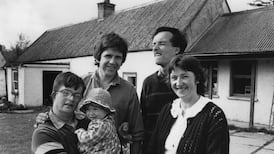I've often murmured, "Are you on drugs?" as I've watched Jennie Bond gush about a royal hat, and I've often thought you'd have to be on drugs as Dr Christian Jessen requested some bloke with a weeping boil on his backside to drop his pants on Embarrassing Bodies. But I've never thought about drugs while watching Jon Snow. I do now.
There he is, the presenter of Channel 4 News, on Drugs Live: Cannabis on Trial (Channel 4, Tuesday), skunked up to his glassy eyeballs and not having a good time at all. "It's robbed me of my soul," Snow says, looking exhausted and sounding paranoid.
And, as with the former royal reporter Bond and others filmed taking cannabis, the barrage of psychological tests afterwards show that Snow is forgetful, anxious, fond of a snack, and listening to music that sounds waaaay better than usual.
Snow and Jessen present this live programme about cannabis. Specifically, as the night wears on, it’s about the difference between old-school hash and the high-powered skunk that has cornered 80 per cent of the market.
Channel 4, of course, has form in this type of programme: it did one on ecstasy, another on sex. The typical format has volunteers giving whatever it is a go and experts, including doctors, psychologists and the police – well, not in the sex-experiment programme – analysing the results.
One such expert is the neurologist David Nutt, a regular on these science-meets-sociology programmes, and a man who, I’ve long suspected, has a brain the size of a small car. Prof Nutt does, in fact, bring such a thing into the studio: a giant 3D model of a brain, which he uses to explain the science bit.
Perhaps the most worthwhile finding in Drugs Live is that skunk users are many times more likely to experience paranoia and other forms of psychosis than hash takers (or those who just say no, obviously). Skunk and hash rob users of motivation, drive and short-term memory. The evidence is there in the before-and-after MRI scans of the volunteers, which show a dramatic reduction in activity in the get-up-and-go part of the brain.
Jessen urges viewers to tweet their opinions – “use the hashtag” – and in the end he asks the studio audience if anything they have seen would make them change their minds about cannabis. They look blank; most are there because of their views, either pro or anti cannabis, in favour of legalising or not. Changing minds is a big ask for one TV programme.
In 2012 a mentally ill teenager walked into a school in Sandy Hook, Connecticut, and shot and killed 20 children and six teachers. It received enormous coverage, so making a documentary about the tragedy requires a different way into the story, especially as the small town has, by the time Jezza Neumann arrives to make his documentary, become exhausted and wary of the media.
In the quiet, sensitive Surviving Sandy Hook (BBC Two, Wednesday) Neumann focuses not on the killer, Adam Lanza, but on three families, including two bereaved by the event, who now work to try to prevent such a horror happening again.
Scarlett Lewis, whose six-year-old son, Jessie, was killed, believes it’s not guns that lead to such atrocities but a societal malaise caused by a lack of hope. She now gives talks in prisons and campaigns for improvements in teenage mental-health services. Gilles Rousseau, whose daughter Lauren was one of the teachers murdered, campaigns for gun control, and a visit to a vast gun convention – its slogan is “nine acres of guns and gear” – shows what he’s up against. Sandy Hook did not become a tipping point in gun control in the US. Since then there have been at least 94 school shootings in American schools.
My lasting impression of Surviving Sandy Hook, amid the grief and sadness, is how comfortable these participants are in front of the camera, how practised they are at giving interviews and, ultimately, how public they have made their grief – which seems as much of a modern American trope as Lanza's actions.
Also going public were the whistleblowers in Whistleblowers: Can We Handle the Truth? (TV3, Monday), an insightful documentary that tells the stories of Irish people who have brought wrongdoing to public attention.
These include Noel Wardick, who made public his concerns about issues to do with fundraising, finances and governance at the Irish Red Cross; Francis “Chalkie” White, who suspected the behaviour of the swimming coach George Gibney; and Olivia Greene, the bank employee who revealed that her boss Michael Fingleton used Irish Nationwide as a personal bank.
We already know these stories, some through court reports, but to see and hear the whistleblowers tell it – often in their own kitchens, distant in time and place from those events – gives a clear idea of the trajectory that all experienced: the mental wrangling and self-doubt before blowing the whistle; the immediate reaction, which typically involved being ostracised by colleagues – we live in a culture where “whistleblower” hasn’t yet been decoupled from “rat” – and the aftermath of living with their decisions and moving on.
This is nice work from TV3’s current-affairs unit.
Ones to Watch: Stepping back in time
Cumann na mBan, the revolutionary women's organisation founded in 1914, tends to be treated as a footnote in Irish history. Cumann na mBan: Mná na Réabhlóide (TG4, Sunday), a drama documentary, puts the women centre stage. It is narrated by Mary McAleese.
A remake of one of the classic TV dramas of the 1970s, Poldark (BBC One, Sunday) stars the Irish actor Aidan Turner as Ross Poldark, who returns to Cornwall after the American Revolution to find that everyone assumed he was dead.
tvreview@irishtimes.com













